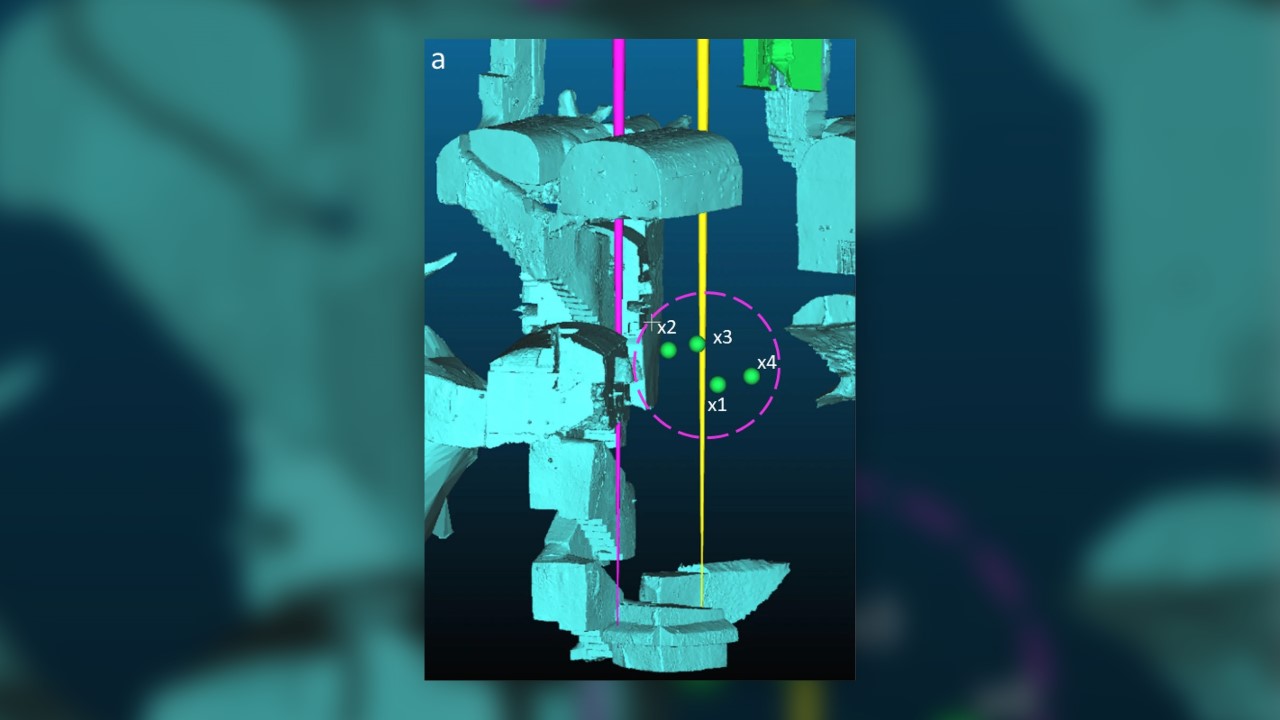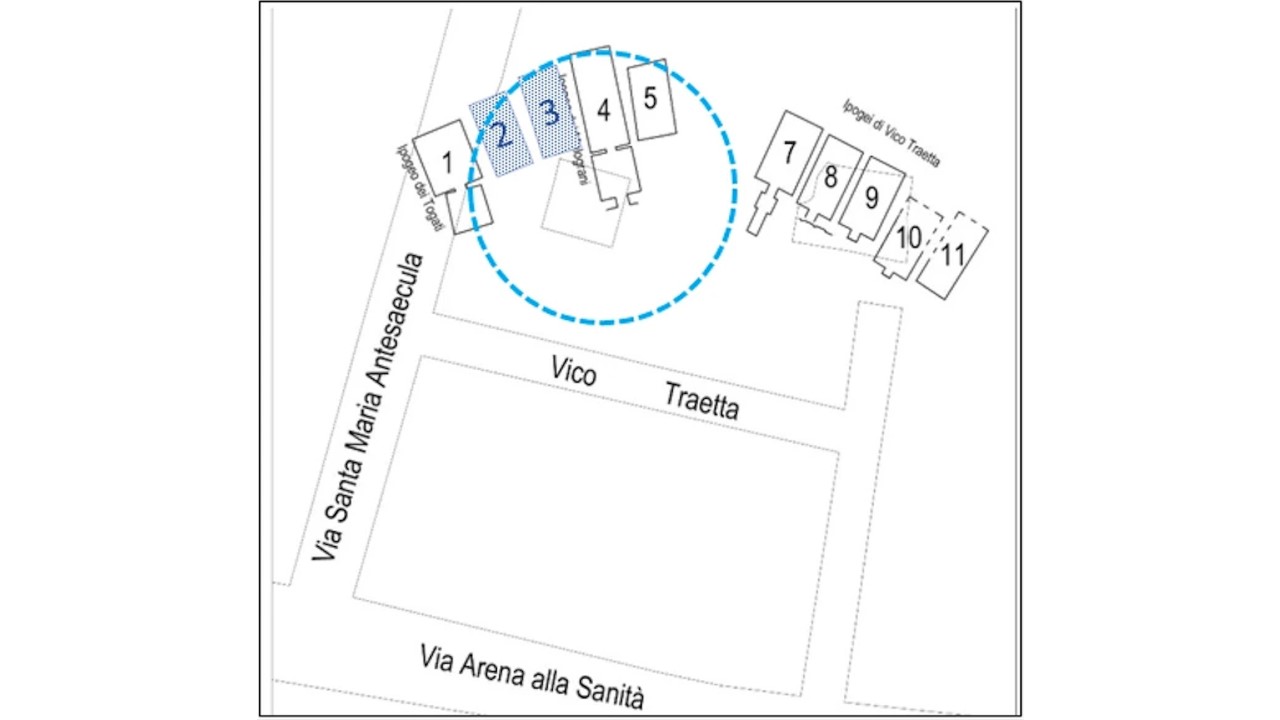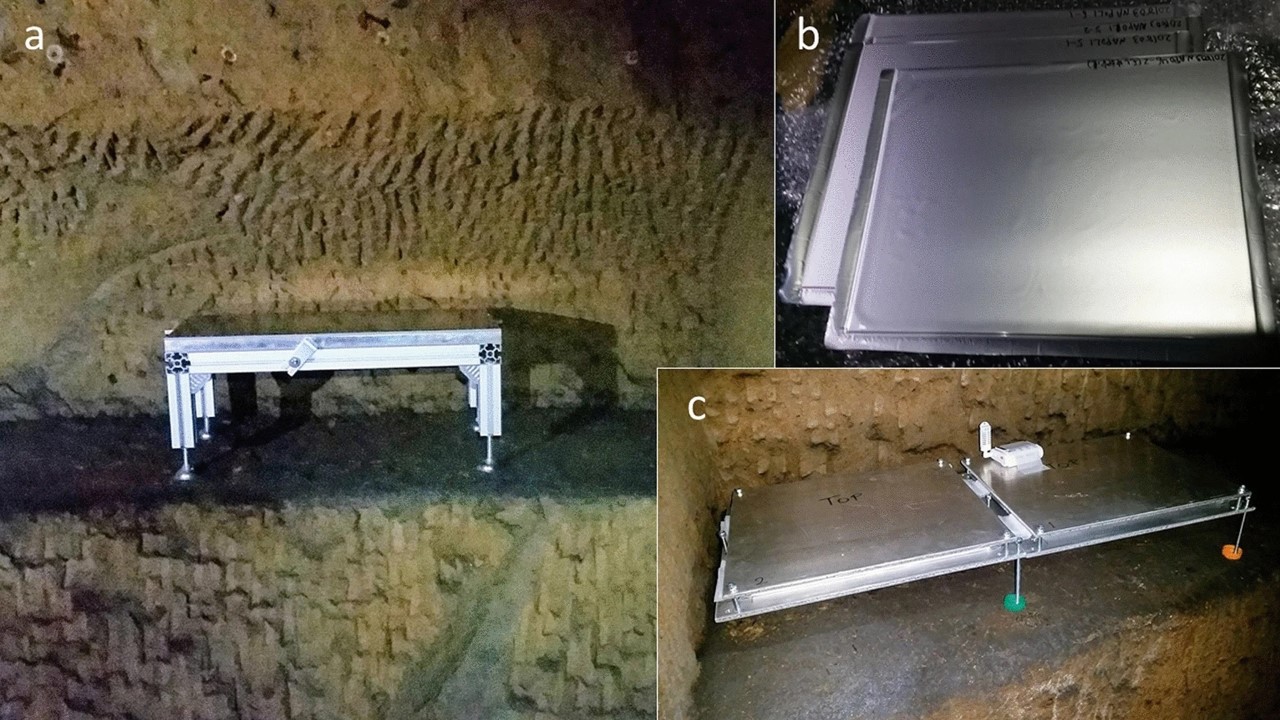Cosmic rays reveal 2,500-year-old subterranean burial in ancient Greek necropolis
Cosmic rays have revealed an underground Greek tomb in Naples, Italy.

Cosmic rays and lasers have revealed that deep underneath the city streets of Naples, Italy, lie the remains of the Greeks who originally settled the area, as well as the catacombs of Christians who lived there during the Roman era nearly two millennia ago, a new study finds.
Researchers have long known that ancient Greek burials were hidden beneath the city, but weren't able to access all of them. Now, these cutting-edge techniques have enabled researchers to peer into the earth without any digging.
Originally founded as Cumae and later renamed Neapolis ("New City") around 650 B.C., the area now known as Naples boasted temples, a forum and numerous underground tombs. In the highly populated and picturesque modern district of Rione Sanità, tombs from multiple stages of occupation are known — from the Greek Hellenistic period (sixth to third centuries B.C.), there are burial chambers for the wealthy called hypogea, and from the later Roman period (second to fourth centuries A.D.), there are early Christian catacombs.
But the layers of contemporary buildings make it difficult to access ancient sewers, cisterns and tombs 33 feet (10 meters) underneath the streets, so a group of Italian and Japanese researchers hypothesized that they could identify previously unknown burial hypogea from the Hellenistic period using 21st-century techniques.
Their study, published April 3 in the journal Scientific Reports, details how they used muography to detect underground voids that were unknown to archaeologists.
Related: Ancient necropolis unearthed just feet away from bustling Paris train station

A muon is a subatomic particle similar to an electron but with a greater mass. In 1936, scientists discovered that muons are produced by cosmic rays in Earth's atmosphere, and that these tiny particles can easily penetrate walls and rocks, scattering in open spaces.
Sign up for the Live Science daily newsletter now
Get the world’s most fascinating discoveries delivered straight to your inbox.
In this study, the muons' tracks were recorded using nuclear emulsion technology, in which extremely sensitive photographic film is used to capture and visualize the paths of the charged particles. By measuring muon flux — how many muons arrive in a particular area over time — and direction using a particle detector, researchers can peer into volcanoes, underground cavities and even the Egyptian pyramids through muography.
However, placing the particle detectors requires some strategizing to catch the muons' movement. The researchers were most interested in scanning the Hellenistic necropolis, located about 33 feet under the current surface, which meant finding a stable place even deeper than that to set up the equipment, which looks a little like a flatbed scanner.
"The big general limitation for muography is that the detector has to be placed below the target level because the muons come from the sky or the upper hemisphere," study lead author Valeri Tioukov, a physicist at Italy's National Institute for Nuclear Physics (INFN), told Live Science in an email. "For archaeology, it's applicable if there is some space for the detector placement below the target level."
Tioukov and his colleagues placed the muon tracking devices 59 feet (18 m) underground, in a 19th-century cellar that was used for aging ham, where they recorded the muon flux for 28 days, capturing about 10 million muons. In order to identify unknown structures, the researchers needed a 3D model of what was already known to exist underground. The 3D laser scans of the accessible structures can then be compared with the measured muon flux. Anomalies in the muon flux images that are not visible in the 3D model can be confidently assumed to be hidden or unknown cavities.

Muography revealed an excess of muons in the data that can be explained only by the presence of a new burial chamber. The chamber's area measures roughly 6.5 by 11.5 feet (2 by 3.5 m), according to the study, and its rectangular shape indicates it is human-made rather than natural.
Given the chamber's depth, the researchers think it was a part of the Hellenistic necropolis dating to the sixth to the third centuries B.C. Likely the tomb of a wealthy individual, the hypogeum may be similar to those first discovered in the late 19th century, the Hypogeum of the Toga-wearers and the Hypogeum of the Pomegranates, both of which can be visited today as part of underground tours of Naples.
"The prospect of identifying and discovering new tomb chambers is obviously appetizing," Rabun Taylor, a Roman archaeologist at the University of Texas at Austin who was not involved in the study, told Live Science in an email. "Some of these Hellenistic tombs and burials on the north side of town yielded goods made of clay, bronze, and iron" when they were discovered a century ago, Taylor said, "so it would be wonderful to unearth some new chambers using modern methods." But this would be a challenging archaeological undertaking, he pointed out, due to the expense and effort needed as well as the fact that the area is densely populated.
Muography unfortunately cannot reveal what is inside the chamber. "In this configuration, there is no way to resolve objects of less than 10 cm [4 inches] in size," Tioukov said. "So we can potentially see the approximate shape of the room, but not small details like bones."

Kristina Killgrove is a staff writer at Live Science with a focus on archaeology and paleoanthropology news. Her articles have also appeared in venues such as Forbes, Smithsonian, and Mental Floss. Killgrove holds postgraduate degrees in anthropology and classical archaeology and was formerly a university professor and researcher. She has received awards from the Society for American Archaeology and the American Anthropological Association for her science writing.










